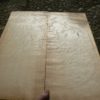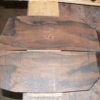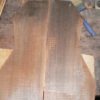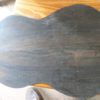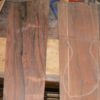I just finished the guitars I was working on and so had to dig through my stash of wood to find something for the orders I have to fill now. This got me thinking about wood in general, wood sellers and the way they grade wood, guitar buyers and what they expect and the different criteria that makers use for choosing wood. The companies that sell us wood used to have two or three grades of wood with the best being A or first (logical). 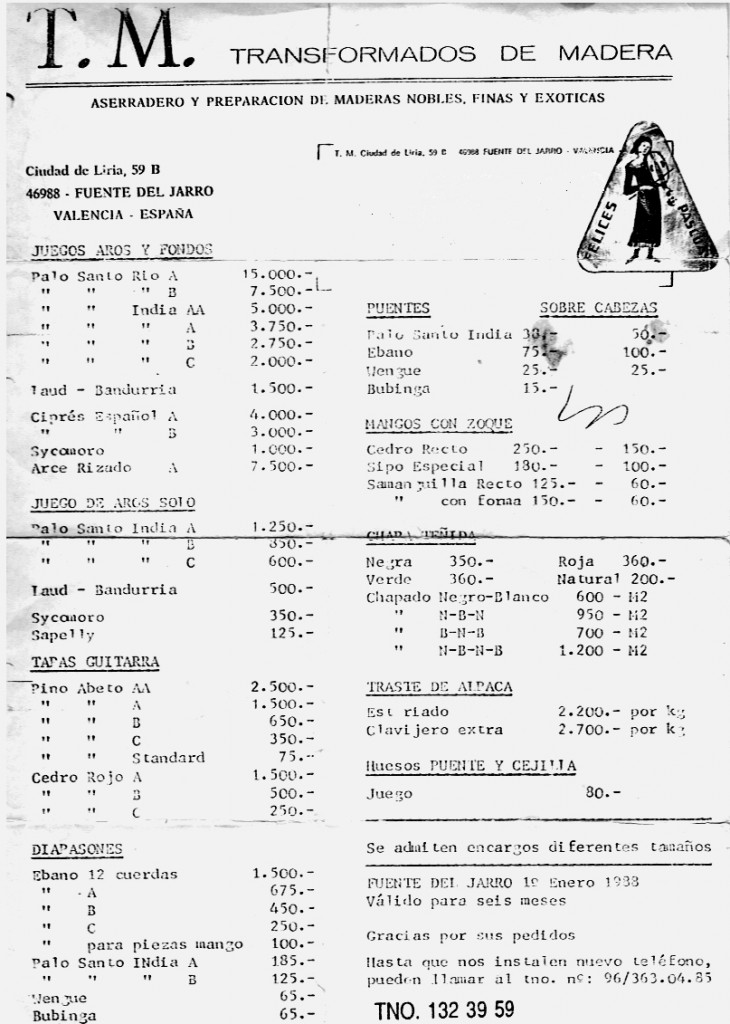 Since then they have slowly added categories so we began to see AA and now we have AAA and of course lately “Master” These categories are useful to the dealers and allow them to charge very high prices for what they consider to be the best wood but to us they are practically meaningless. For all the best intentions the dealers might have, until they start making guitars and can see what specific physical characteristics are desirable they will always be working blind. They grade the tops by sight only; they don’t have the time nor the sensitivity to judge each top with their other senses (in reality we don’t expect them to). We understand too that most of them will not split the wood as we do when we get the opportunity because they get fewer saleable pieces from a tree when they split it. Even in the case of a guitar maker who buys, then grades and sells wood we find that the buyer doesn’t always share the seller’s idea about what is the best quality wood. Each maker looks for certain qualities in the wood because he knows what result he will get when he uses wood with those qualities.
Since then they have slowly added categories so we began to see AA and now we have AAA and of course lately “Master” These categories are useful to the dealers and allow them to charge very high prices for what they consider to be the best wood but to us they are practically meaningless. For all the best intentions the dealers might have, until they start making guitars and can see what specific physical characteristics are desirable they will always be working blind. They grade the tops by sight only; they don’t have the time nor the sensitivity to judge each top with their other senses (in reality we don’t expect them to). We understand too that most of them will not split the wood as we do when we get the opportunity because they get fewer saleable pieces from a tree when they split it. Even in the case of a guitar maker who buys, then grades and sells wood we find that the buyer doesn’t always share the seller’s idea about what is the best quality wood. Each maker looks for certain qualities in the wood because he knows what result he will get when he uses wood with those qualities.
So what does all this mean? It means that if you don’t make guitars then you don’t know squat about guitar-making wood. It means that if you as a maker want the best and most appropriate wood for guitar making you have to go to the dealer and pick through the master grade, the AAA and the AA (and maybe more). Some think we do this to get the cheaper wood but actually we know that the best wood is not necessarily in the master stacks so we search through all we can. In trying to be the best, most ethical makers we can, one of the problems we run up against is the excess of information (and misinformation) especially on the internet. This idea of the “master grade” tonewood has reached the end user and now everyone expects a concert instrument to be made with “master grade” wood. “Are you telling me that I have to use the wood that the wood seller thinks is the best when I make a guitar for you?” Wouldn’t it be better if I, after making 160 guitars, were to decide what is the best wood, store and season it for 10 or 15 years and then use it in the way that best takes advantage of its physical characteristics? I am willing to allow the client some input on the wood I use for his/her guitar but the choices must be from among the sets that I have chosen when I bought the wood in the first place.
Another problem we come up against is the client’s concept of beautiful wood. Very often a woodworker sees beauty in the stability, evenness of grain and other characteristics that make the wood easier to work with. We learn to love the species which we can rely on not to crack or deform. Usually the most stable cut of wood will not yield the most spectacular aesthetic. For example, Brazillian Rosewood is prone to cracking and deformations but has a better chance of being stable if it has straight, even grain and especially if it is riftsawn. Bird’s eye maple can make spectacular-looking guitars but can also make for deformed backs and sides. This is because in order to bring out the best eyes, the wood is flatsawn. Curly maple is sometimes flatsawn too and can cause the same problem. A discussion came up recently on one of the forums about bearclaw spruce and it was reported that many years ago the wood sellers couldn’t sell it. Of course they couldn’t! If straight, even grain and no run-out are so important in a top then surely bearclaw (localized runout) is not going to be great. I won’t say it is bad wood and I do buy some because I know that clients will ask for it and I realize that aesthetics are very important these days.  I think we all agree that the top wood is extremely important but what makes a great top? Certainly not grains per inch. My most successful guitar (more concerts and recordings than any other) has a top with 8 grains per inch.
I think we all agree that the top wood is extremely important but what makes a great top? Certainly not grains per inch. My most successful guitar (more concerts and recordings than any other) has a top with 8 grains per inch.
In conclusion I would like to say something I have said publicly before: Trust your guitar maker! When you are looking for a guitar, play as many guitars as you can by a maker, find out who the maker’s teacher was, how many guitars he/she has made and then leave all “acoustic” decisions up to the maker. We are not going to limit ourselves to using Cypress and Indian Rosewood (wonderfully stable woods) but if I use a piece of wood on your guitar it is because I think it will work musically and physically with my way of building. Here are a few samples of 14-year-old wood which I will use soon. Some of it is very beautiful but I will feel much better about using the straight-grained pieces. Usually if you keep it for 10 to 15 years before you use it you can see any deformations and cut it up for headplates or decorative strips if it is going to cause problems for back and sides.

